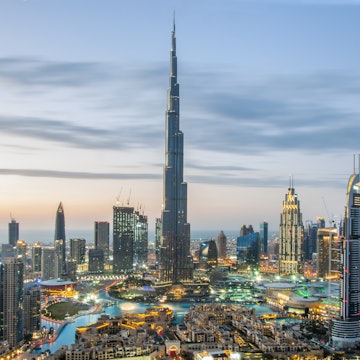

©aiqingwang/Getty Images
Overview
Dubai is a stirring alchemy of profound traditions and ambitious futuristic vision wrapped into starkly evocative desert splendor.
Plan your trip with Guide, an AI travel planner!
Create a personalized trip itinerary in seconds using artificial intelligence.
Must-see attractions
Planning Tools
Expert guidance to help you plan your trip
Best Things to Do
Visitors won't be short of things to do in the land of iconic skyscrapers, city-sized malls and palatial beach resorts.
Read full article
Best Time to Visit
With its desert location, it's no surprise that Dubai has only two settings on its thermostat: warm and hot. Here's when to plan your trip to Dubai.
Read full article
Things to Know
Dazzling Dubai can be bewildering if you're not prepared – use this guide and embrace the culture, dress appropriately and learn the laws and customs.
Read full article
Transportation
Getting around Dubai requires some form of transport, whether that's taking a taxi, using rideshare apps, hopping on public transport or driving yourself.
Read full article
Free Things to Do
Dubai might be known as the City of Gold, but that doesn't mean it has to cost the earth to visit. Here are the best things to do in Dubai for free.
Read full article
Best Neighborhoods
Dubai is a sprawling city, so it pays to plan your visit wisely. Instead of packing in too many sights, get to know the city's neighborhoods one at a time.
Read full article
Day Trips
You’ll find everything from mosques and museums to mountain bike trails and ziplines within day-trip distance of Dubai. Here are the best spots to visit.
Read full article
Traveling with Kids
While Dubai might have a reputation as being a playground for the rich, this family-friendly city should be known as a playground for the little ones, too.
Read full article
5 Shops
As one of the most cosmopolitan cities in the world, the richness of Dubai’s diversity truly shines through in its contemporary shopping scene.
Read full article
Get a book. Get inspired. Get exploring.
in partnership with getyourguide
















